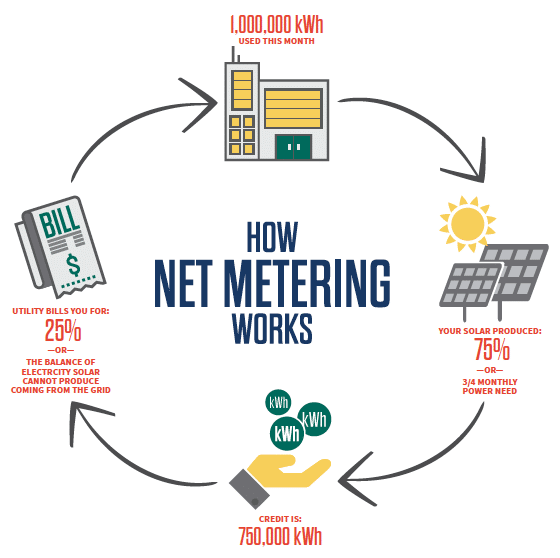By Jessica Tyler and Jason Slattery, GEM Energy*
 Colleges and universities do not consume energy quite like any other type of customer. Universities can be extremely large, with many buildings of widely varying shapes, sizes and compositions. Classrooms, offices, residential buildings, food production, auditoriums and gymnasiums – this list of usage profiles is robust to say the least. Combine these factors with increasingly aggressive sustainability initiatives and it’s easy to see why universities are now much more open to integrate solar solutions into their energy systems.
Colleges and universities do not consume energy quite like any other type of customer. Universities can be extremely large, with many buildings of widely varying shapes, sizes and compositions. Classrooms, offices, residential buildings, food production, auditoriums and gymnasiums – this list of usage profiles is robust to say the least. Combine these factors with increasingly aggressive sustainability initiatives and it’s easy to see why universities are now much more open to integrate solar solutions into their energy systems.
 According to a 2017 report from Environment America, a coalition of environmental advocacy organizations in the U.S., more than 300 universities across the country have installed solar systems. These educational institutions are taking advantage of a myriad of benefits, from long-term spend visibility to enhanced recruitment capabilities.
According to a 2017 report from Environment America, a coalition of environmental advocacy organizations in the U.S., more than 300 universities across the country have installed solar systems. These educational institutions are taking advantage of a myriad of benefits, from long-term spend visibility to enhanced recruitment capabilities.
Environmental sustainability plays a significant role in the choices people make regarding everything from the food consumed to the employers selected – and certainly, colleges that prospective students consider. Colleges and universities are expanding curriculum and on-campus offerings to meet this demand, from creating sustainability programs and majors to establishing activities and clubs. When students consider different schools or programs, an on-campus solar array with associated monitoring capabilities can be a significant draw and moreover, a recruitment tool.
 A solar array on campus can provide real-world, action-oriented elements to renewable energy-based curriculum. Beyond learning the science behind solar technology, students gain insight into what drives change. When students can understand and recognize carbon offsetting implications in terms of cars on the road or manufacturing facilities, they are seeing a real-world functional impact.
A solar array on campus can provide real-world, action-oriented elements to renewable energy-based curriculum. Beyond learning the science behind solar technology, students gain insight into what drives change. When students can understand and recognize carbon offsetting implications in terms of cars on the road or manufacturing facilities, they are seeing a real-world functional impact.
One common integration method that educators use is a “sustainability investigation” in which students analyze energy production and consumption data. Then, they determine how many panels are needed to support a certain level of consumption in different sized buildings and homes.
Educators utilize data in classrooms by leveraging the monitoring system that allows students to access the data remotely via the internet. There are many ways for educators to make the data interactive, from games to worksheets and project-based learning opportunities for the classroom.
Beyond the classroom, solar advantages suit university operations particularly well. For administrators responsible for managing utility costs at universities, the benefits of solar are straightforward. Inconsistent consumption levels throughout the calendar year are part of the central challenge for managing energy use in a university setting. Fewer students are on campus during the summer, while winter months carry extreme spikes in water and space heating, not to mention the lights coming on earlier across campus.
Through net metering, solar can help universities even out costs throughout the year – even when classes are not in session. Net metering is essentially a mechanism for rollover credits, similar to rollover minutes on a cell phone. Solar resources are most abundant during summer months, and therefore result in maximum output from a solar array.
Excess power production in the summer can be rolled over to fill in months when school is in session and consumption is higher and during winter months in which the solar resource is not as strong. As long as overall consumption in a 12-month period is not exceeded, those credits roll over to fill deficits.
Another major advantage of solar for universities is the ability to accurately predict energy costs long-term. This reduces reliance on fluctuations in traditional grid energy, enhancing budget accuracy and increasing control over utility costs. Through peak shaving, universities with on-site solar arrays are able to reduce the cost of their energy usage when consumption is at its highest.
GEM Energy recently completed a three-megawatt solar project at Ohio Northern University (ONU) in Ada, Ohio, part of a goal to establish the largest renewable campus in the state of Ohio. GEM Energy managed the entire process from concept to completion, including securing funding, designing, building and ongoing maintenance. ONU students were actively involved in the process, as well, gaining valuable hands-on experience during the design and building process as co-ops.

Today ONU generates 30 percent of its own electricity on campus, in part through the 11-acre solar array. Demand savings generated by the array are projected to realize between $60,000 and $100,000 each year. As traditional costs rise and solar costs remain consistent, ONU is in a position to realize even greater savings as the 25-year PPA matures.
With solar, once the array is paid off anything produced beyond that point is essentially free because there is no fuel input. If you are looking at energy from a traditional standpoint, every time you flip on a light switch you pay a bill, but you don’t really see a return on the investment. Whereas, if you invest in a solar array which is a form of on-site power, the life expectancy of the system is upwards of 30-40 years, so the return on the investment is significant.
*Jason Slattery serves as the Director of Solar at GEM Energy, a subsidiary of the Rudolph Libbe Group. Jessica Tyler is the solar business development manager at GEM.
This content is protected by copyright and may not be reused. If you want to cooperate with us and would like to reuse some of our content, please contact: editors@pv-magazine.com.








By submitting this form you agree to pv magazine using your data for the purposes of publishing your comment.
Your personal data will only be disclosed or otherwise transmitted to third parties for the purposes of spam filtering or if this is necessary for technical maintenance of the website. Any other transfer to third parties will not take place unless this is justified on the basis of applicable data protection regulations or if pv magazine is legally obliged to do so.
You may revoke this consent at any time with effect for the future, in which case your personal data will be deleted immediately. Otherwise, your data will be deleted if pv magazine has processed your request or the purpose of data storage is fulfilled.
Further information on data privacy can be found in our Data Protection Policy.